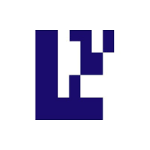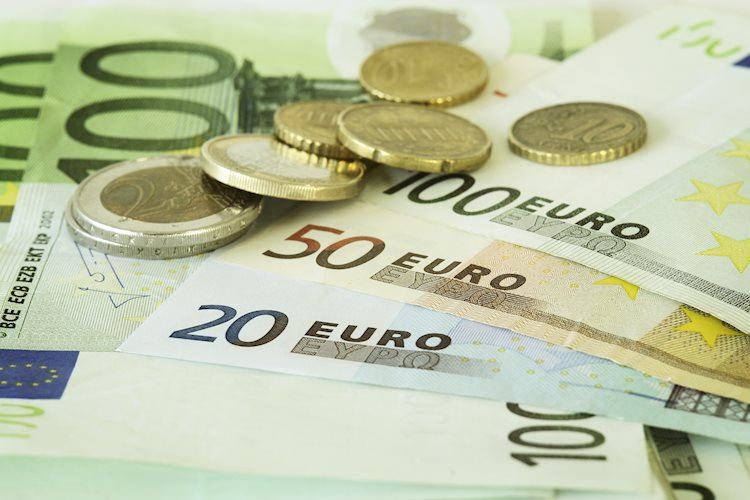Sector Report: Yield Farming – Bitcoin Market Journal


Yield farming, or liquidity mining, is an investment strategy in decentralized finance (DeFi) that involves providing liquidity to DeFi platforms in exchange for rewards, typically in the form of the platform’s native tokens. Yield farming is like earning interest on your crypto.
Just as keeping your dollars in a savings account provides banks the capital to make loans, storing your crypto in yield-bearing “accounts” provides DeFi platforms the capital to run their “businesses” and a host of other benefits.
Yield farming attracts capital to fuel the growth and expansion of the DeFi ecosystem and creates network effects that increase the demand for platform tokens, elevating their value. So, a second way of investing in yield farming is buying and holding the tokens of top yield-farming platforms.
As you’ll see in our updated yield farming sector report, yield farming offers the potential for high returns, keeps the DeFi sector dynamic and competitive, fosters constant innovation, and attracts even more ecosystem participants.
Key takeaways:
- Yield farming is seeing a renaissance in 2024 as the DeFi ecosystem is seeing increased adoption.
- By participating in yield farming, you can use your idle crypto to generate yield (think: interest).
- The top yield farming protocols also allow you to buy and hold their tokens, investing in this growing sector.
The Demand for Yield Farming
As long as investors hold crypto, there will be a demand to earn interest. Many investors want to put their crypto to work, like putting their money to work in a traditional savings account.
The yield farming companies below borrow money from individual liquidity providers (LPs), who provide the capital to make their products work.
While becoming an LP is one strategy to make money through yield farming — and there are many others — we think the most straightforward investing approach is to buy and hold the tokens of top yield farming companies.
We’re bullish on crypto yield as an asset class because it brings a lot to the table that speaks to our core investing values:
- The Promise of High APY: Yield farming rewards can sometimes cross absurd levels, reaching as high as 3,000% APY. This is a major factor that pulls in many investors despite the steep risks involved in staking funds across highly volatile cryptos and other derivatives. (Our rule of thumb: seek out reasonable returns from trustworthy projects. if an APY seems too good to be true, it usually is.)
- Efficient Utilization of Idle Capital: At Bitcoin Market Journal, we encourage a long-term, buy-and-hold approach. Yield farming allows investors to use their crypto instead of letting it sit idle in a cold wallet. The DeFi marketplace has higher- and lower-risk staking options, allowing you to pick opportunities that match your risk tolerance.
- The Perks of Holding Governance Tokens: Most DeFi protocols reward LPs with their tokens. Some of these “governance tokens” come with special perks and additional benefits. For a well-established company with high TVL, governance rights can grant access to additional revenues from trading fees. Voting rights also grant you the power to have a say in the company’s future trajectory.
- Diversification and Market Exposure: Diversification and risk mitigation are equally crucial in traditional and cryptocurrency investing. Yield farming increases your exposure to exciting new DeFi projects and tokens. It could give early access to an innovative new company and unlock massive ROI. Spreading funds across multiple companies and farming pools is also a great way to diversify.
- A Potential Hedge Against Market Volatility: DeFi protocols have shown remarkable resilience, even during crypto winters. Even when centralized exchanges collapsed, DEXs continued smooth operations with minimal hiccups. Many yield farming companies offer APYs well above those in traditional savings accounts and treasury bonds. Yield farming provides an intelligent way for investors to be comfortable with crypto markets and beat high inflation.
The State of Yield Farming
Yield farming has historically provided high returns at a time when traditional banks offered meager interest rates.
The crypto market crash in 2022 resulted in losses worth over $150 billion, a decline of more than 76%. However, since the end of 2023, investor interest in crypto has surged thanks to Ethereum’s successful transition to PoS, the rise of liquid staking protocols, and the SEC’s approval for Bitcoin spot futures.
According to DefiLlama, the TVL in DeFi was trending positively at $65 billion on December 31st, 2023, a 44% increase year-over-year. Barely three months later, in March 2024, the value had nearly doubled to $115 billion.
Liquid Staking and DeFi Lending
DeFi in 2024 is dominated by liquid staking, particularly on ETH. Lido was the early mover that capitalized on the demand for liquid staking in the early days of Ethereum’s transition from proof of work to proof of stake.
Another major segment that has gained investor attention since 2023 is DeFi lending. Three protocols—Aave, JustLend, and Spark—account for almost $20 billion in TVL.
Although they have fallen off the popularity charts, decentralized exchanges still attract cryptocurrency holders seeking maximum returns through yield farming. Uniswap, Curve, and Pancakeswap are the main players in this segment, with high median APYs in the double digits.
- In terms of blockchains, Ethereum continues to dominate the DeFi landscape with $64 billion TVL across liquid staking, yield farming, and lending protocols—more than 55% of the market.
- Tron has maintained its second-place position, mainly through DeFI lending and its lending positions using the USDT stablecoin.
- However, Solana was the biggest mover in the blockchain space in 2023. Despite bottoming out during the bear market and the collapse of FTX, the network rebounded sharply towards the end of 2023, with a 40% increase in token price and a 33% increase in trading volumes.
- Last but not least, discussing the state of DeFi in 2024 is impossible without considering EigenLayer. The newly launched protocol has created a new segment for restaking crypto. Despite not being fully operational, the protocol has generated some jaw-dropping performances in less than a year.
The Rise of Institutional Investors
We’ve outlined our strategy of buying and holding the tokens of top-yield farming platforms. This strategy is shared by the “big money” players, who are investing millions of dollars.
Curve and Uniswap, the two largest DEXs offering yield farming and staking services, have received $266 million and $176 million in three funding rounds in recent years, respectively. Prominent backers include Polychain Capital, Andreessen Horowitz (a16z), Paradigm, SV Angel, and Variant.
Likewise, Aave has been quite busy in the fundraising circuit over the years, with nine funding rounds yielding $49 million from investors like Blockchain Capital, Three Arrows Capital, and Standard Crypto.
All that pales compared to the $100 million Andreessen Horowitz committed to EigenLayer in the project’s first-ever funding round.
They see the potential: DeFi may well be the future of finance. Even major organizations like the OECD and IMF acknowledge its potential to revolutionize the modern financial system.
According to a 2023 report by Ernst & Young, 69% of institutional investors expressed an interest in increasing their crypto allocations over the next three years, with more than 33% planning to enter staking and yield generation.
Top Yield Farming Platforms
 Uniswap (UNI)
Uniswap (UNI)
TVL: $6.2b
UNI Price: $14.10
Daily Active Users (30-day avg): 194.62k
Trading Volume (annualized): $445.95b
Uniswap is one of the most popular decentralized exchanges on the Ethereum blockchain. Founded and launched in 2018 by Hayden Adams, the DEX has attracted investment from Paradigm, USV, and Andreessen Horowitz (a16z).
Uniswap is designed for trading/exchanging ERC-20 tokens and decentralized lending. There is no buying or selling involved. Holders of the UNI token handle the protocol governance. Uniswap rewards LPs with a share of the trading fees generated on the platform.
As one of the largest DEX platforms with a TVL of $6.2 billion, Uniswap remains a desirable platform for yield farming. Although it has fallen behind the newer protocols in terms of sheer size, median APY, and market position, it is hard to argue against the long-term potential of Uniswap.
However, the lack of any kind of KYC process does raise some concerns in the current climate. Regulators are getting actively involved in the crypto ecosystem and tend to have a dim view of privacy-oriented platforms like Uniswap.
 Aave (AAVE)
Aave (AAVE)
TVL: $11.2b
AAVE Price: $134.41
Daily Active Users (30-day avg): 5.40k
Active Loans (annualized): $5.6b
Aave is a decentralized platform dedicated to lending and borrowing cryptocurrency. Although originally launched on the Ethereum blockchain, It has since expanded to other blockchains, such as Avalanche and Harmony.
The Aave project was launched in 2017 under ETHLend by Stani Kulechov, a Finnish law student. In 2018, it was rebranded as Aave, which means “ghost” in Finnish. Here, the LPs are lenders who earn interest income as “aTokens.”
The protocol also has a native governance token called AAVE. Loans on Aave are overcollateralized to reduce the risk of defaults. To get a loan, borrowers must pledge other crypto assets worth more than the loaned amount.
In recent years, Aave has become one of the top 5 DeFi platforms regarding total value locked. And it serves a clear purpose in the crypto ecosystem. It allows holders to temporarily pawn their holdings to gain exposure to another token without selling.
With increasing confidence in crypto markets, platforms like Aave can expect increased activity in 2024 and beyond. However, this kind of activity has limited use outside DeFi’s world.
And like all other DeFi projects, there is considerable risk of regulatory action due to the decentralized nature of the protocol’s operations.
 Curve Finance (CRV)
Curve Finance (CRV)
TVL: $3.25b
CRV Price: $0.820
Daily Active Users (30-day avg): 735
Trading Volume (annualized): $13.7b
Curve Finance was the largest DEX platform by volume in its prime, even ahead of Uniswap. Launched in 2020 by Michael Egorov, Curve is a non-custodial exchange protocol focusing heavily on stablecoin liquidity pools.
The protocol launched on the Ethereum blockchain when stablecoins like Tether and USDC were already popular. With its promise of low fees, low risk of slippage, and efficient stablecoin trading opportunities, Curve rapidly attracted LPs.
Apart from stablecoins, Curve’s liquidity pools also follow wrapped versions of popular cryptocurrencies. This combination allowed Curve to stay ahead of other DEXs in terms of fees and efficiency while reducing the risk of volatility.
The platform’s native token is CRV. It is both the governance token and the reward for yield farming. Although the project seemed poised for great things in 2022, several recent setbacks have led Curve down a darker path.
A major platform hack stole over $70 million in user funds and drastically reduced the value of the CRV token. Although TVL and the token price have recovered in recent months, Curve remains a shadow of its former self in 2024.
 PancakeSwap (CAKE)
PancakeSwap (CAKE)
TVL: $2.86b
CAKE Price: $3.97
Daily Active Users (30-day avg): 87.32k
Trading Volume (annualized): $66.9b
PancakeSwap is a decentralized exchange that shares its DNA with Uniswap. Originally a fork of Uniswap, the new protocol was adopted and deployed on the Binance Smart Chain (BSC). Although it is a Uniswap fork, PancakeSwap exists independently on the BSC.
The high gas fees and slow transactions that plagued the old Ethereum network in 2020 prompted the development team to switch to Binance. This allowed PancakeSwap to attract more users with its efficient and cost-effective solutions.
PancakeSwap is a straightforward DEX where LPs earn rewards for staking and yield farming. The protocol pays LPs a percentage of trading fees in CAKE.
PancakeSwap’s only major limitation is its absence from other popular blockchains like Ethereum. Being on the BSC has major disadvantages, like the inability to trade in tokens other than BEP-20.
However, PancakeSwap is one of the better options in terms of size, available features, and reliability. Despite Binance’s continued issues with regulators, the protocol’s performance in user trust and demand remains unaffected in 2024.
 Lido Finance (LDO)
Lido Finance (LDO)
TVL: $40.07b
LDO Price: $3.32
Daily Active Users (30-day avg): 453
Token Trading Volume (annualized): $27b
When Ethereum began its slow transition from proof of work to proof of stake in 2020, it presented several challenges to users interested in staking ETH – the high cost of entry (32ETH) and an indefinite lockup period.
The Lido protocol was designed to overcome both of these issues. It allowed users to commit small fractions of ETH to the staking pool and earn rewards. By giving out a derivative token – Staked Ethereum or stETH – Lido also solved the liquidity problem.
Users get stETH equivalent to the ETH they commit to Lido. You can use the stETH as a proxy for your ETH on other DeFi platforms. Lido gained a massive early-mover advantage as the first protocol to pioneer liquid staking.
As of 2024, Lido dominates the DeFi space and the ETH staking segment with a TVL of $40 billion. Many critics argue that the platform has become too successful, posing a risk to the entire Ethereum network through excessive centralization.
However, in recent years, Lido and similar protocols like Rocket Pool have added safeguards against this risk. With ETH gaining over 79% in Q1 2024 alone, the demand for Lido’s staking services can expect sustained growth.
 EigenLayer
EigenLayer
TVL: $12.32b
Token Price: NA
Daily Active Users (30-day avg): 137
Trading Volume (annualized): NA
EigenLayer is still in its very early development stages. The protocol, built on Ethereum, introduces the concept of restaking to DeFi. Users who have staked their ETH on platforms like Lido or Rocket Pool can restake their derivative tokens, such as stETH and rETH, on EigenLayer.
The protocol’s restaked tokens will act as a security layer for other applications built on the blockchain. EigenLayer will “rent out” pooled blockchain security to developers using smart contracts.
In exchange for committing their liquid tokens, the validators will receive an additional source of passive income in addition to what they receive via Lido or Rocket Pool.
Understandably, the allure of double rewards has generated intense interest in EigenLayer since the startup’s launch in 2021. After the successful release of its mainnet in August 2023, the protocol started accepting staked tokens from users.
In less than a year, EigenLayer has already received liquid staking tokens worth $12 billion, catapulting the protocol into second place on the list of the most significant DeFi projects regarding TVL.
There is plenty to look forward to from this protocol in 2024, as it is yet to launch a native token and fully open up its platform to users. Despite all that, the startup has already raised $150 million from investors like a16z, indicating solid institutional interest in the project.
 JustLend (JST)
JustLend (JST)
TVL: $7.90b
JST Price: $0.043
Daily Active Users (30-day avg): 5.63k
Active loans: NA
JustLend is the lending protocol native to the Tron blockchain. The name is derived from Justin Sun, the highly controversial founder of Tron.
Launched in 2020, JustLend has experienced strong and steady growth in the last four years. Towards the end of 2023, the decentralized protocol briefly overtook Aave and became the segment leader in DeFi lending.
Although Aave recaptured the top spot in 2024, JustLend remains one of the top 5 most extensive DeFi protocols. Its existence on Tron presents both advantages and challenges to the protocol.
Over the years, Tron and its stablecoin Tether have acquired a wide user base, particularly in developing nations, thanks to fast and highly affordable transactions and excellent network stability.
However, the blockchain is also a magnet for controversy due to its association with Sun, one of the crypto industry’s most controversial figures.
 Spark (SPK)
Spark (SPK)
TVL: $4.15b
SPK Price: NA
Daily Active Users (30-day avg): 64
Active loans: $1.8b
Spark is a lending protocol launched by MakerDAO, the organization behind the DAI stablecoin. It was designed to be the primary lending solution for DAI users.
Apart from DAI, the protocol will also support loans in ETH, staked ETH, and staked DAI. If you are a user of DAI, you will get more competitive rates on the platform.
Spark attracted significant capital inflows after its launch in August 2023, thanks to an appealing APY of 8%. Within 10 months, the protocol had amassed a TVL of over $4 billion, nearly half that amount in active loans.
To spur activity, MakerDAO plans to airdrop two billion SPK tokens to Spark users over the next ten years. However, no news has been released on the actual date of the airdrops.
Investor Takeaway
The DeFi space is more diverse than ever, with established platforms in liquid staking, lending, and DEX yield farming all making gains. TVL has more than doubled from below $50 billion to over $110 billion.
The arrival of institutional investors could herald a new era of greater stability and transparency in the DeFi space. However, uncertainty persists due to ongoing pressure from regulators in the EU and North America.
With the system’s variability and uncertainty, we advise caution and due diligence for any newcomers. A good rule of thumb is to narrow your investment considerations to the tokens with the most users and the highest TVL.
And if you would like to earn yield on your crypto holdings, stick with longstanding, reputable platforms.
Don’t miss out on crypto investing knowledge. Subscribe to Bitcoin Market Journal and keep learning every day.



